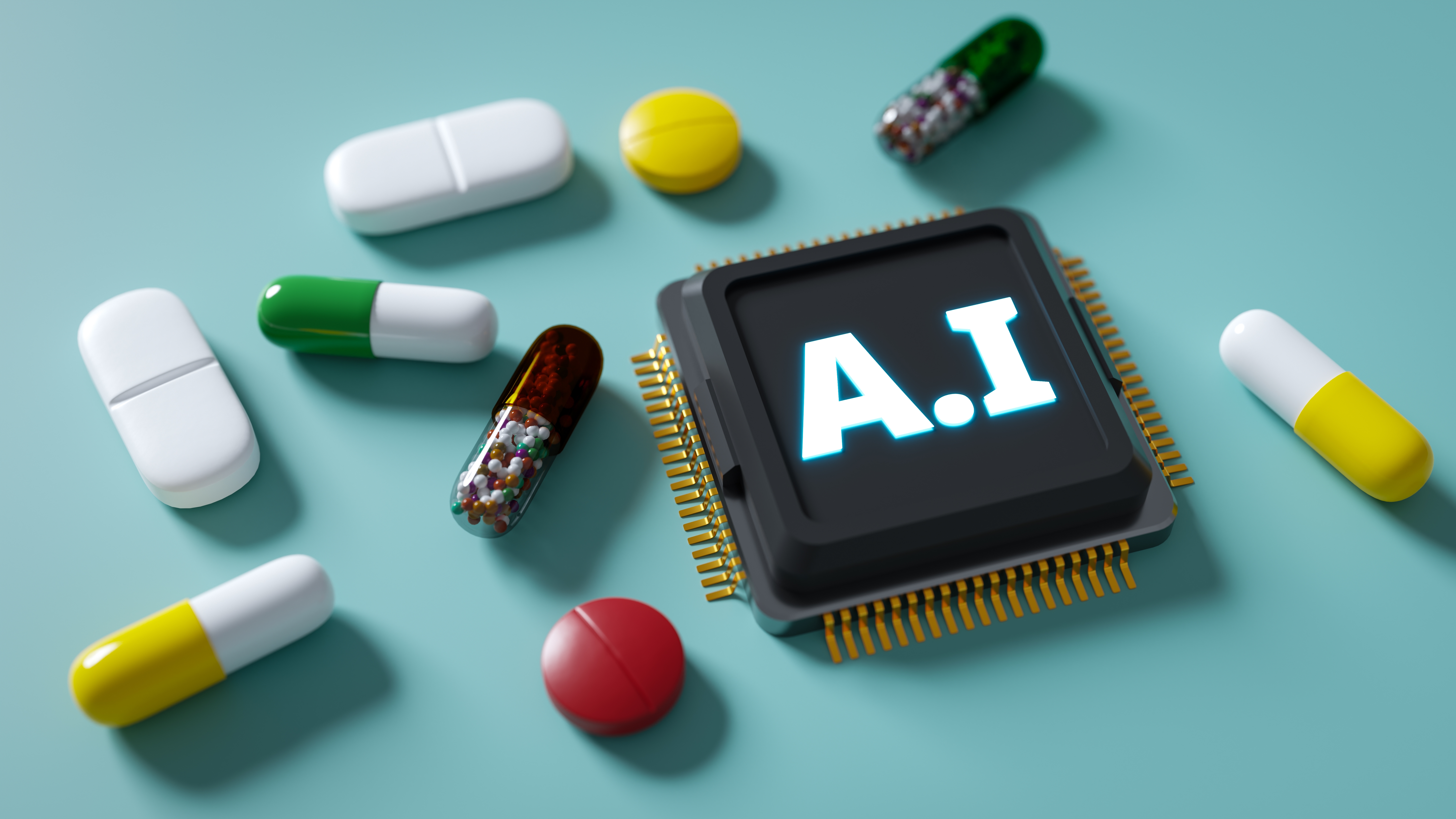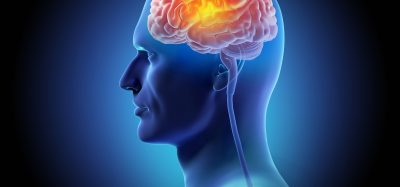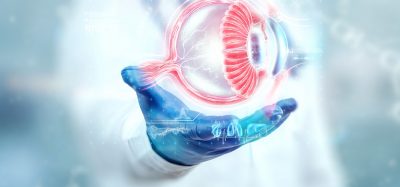How AI is quietly changing drug manufacturability
Posted: 12 August 2025 | Sam Wightwick (Drug Target Review) | No comments yet
AI is moving beyond drug design to answer a critical question: can a promising compound actually be manufactured at scale? By predicting synthetic feasibility early, machine learning tools are helping drug developers avoid costly failures, streamline R&D and design molecules that are both effective and practical to produce.


In the race to accelerate drug discovery, artificial intelligence (AI) has already proven itself to be adept in areas like target identification, virtual screening and molecular generation. From predicting protein structures to designing entirely new compounds, AI is helping to redefine what is possible in early-stage research and development (R&D). But amongst these advancements, a more silent application is appearing which could prove equally transformative but receives far less attention: predicting whether a compound can actually be manufactured at scale.
This question – “Can we make the drug?” – is far more than a logistical concern. It’s a core determinant of whether a promising lead ever becomes a viable therapy. Many compounds with ideal biological profiles ultimately fail due to challenges in synthesis, scalability or cost-effectiveness. Traditionally, manufacturability has been evaluated late in development, after substantial resources have been invested. This creates inefficiencies, delays and avoidable failures.
AI is now positioned to change that. By using machine learning models trained on large datasets of chemical reactions, AI systems can assess the synthetic accessibility of compounds, suggest optimised routes and spot problems early, long before a compound reaches the lab. This not only saves time and resources but reshapes how teams approach molecular design.
Biomarkers are redefining how precision therapies are discovered, validated and delivered.
This exclusive expert-led report reveals how leading teams are using biomarker science to drive faster insights, cleaner data and more targeted treatments – from discovery to diagnostics.
Inside the report:
- How leading organisations are reshaping strategy with biomarker-led approaches
- Better tools for real-time decision-making – turning complex data into faster insights
- Global standardisation and assay sensitivity – what it takes to scale across networks
Discover how biomarker science is addressing the biggest hurdles in drug discovery, translational research and precision medicine – access your free copy today
This article will explore how AI is transforming drug manufacturability assessment now – from retrosynthetic planning to implementation – and why this underreported capability may be the missing link in fully data-driven drug development for the future.
Why manufacturability matters
In drug discovery, it is very common for development to stall – not because a molecule fails in a biological assay, but because it is difficult or expensive to create. Poor synthetic accessibility, unstable intermediates or complex multistep pathways can all ruin promising compounds during preclinical or manufacturing scale-up. Candidate failures in early development are often related to issues of synthetic complexity and production feasibility.
In drug discovery, it is very common for development to stall – not because a molecule fails in a biological assay, but because it is difficult or expensive to create.
These problems usually emerge too late in the pipeline, often after significant investment. This means that it is critical to join up the creativity of genAI models to the restrictions of actual chemistry, that needs to be made and tested quickly.[1]
AI is now stepping in to help ensure that molecules designed for biological performance are also chemically viable. This pivot from “can we design it?” to “can we make it?” is reshaping how drug discovery teams think about feasibility.
How AI predicts manufacturability
AI approaches to assessing manufacturability fall into two main categories:
- Synthetic Accessibility Scores (SA Scores)
These are computational metrics that estimate the ease or difficulty of synthesizing a molecule. Traditional methods like SA Score (Ertl and Schuffenhauer) rely on molecular fingerprints and fragment analysis to give a score from 1 (easy) to 10 (difficult).[2]
However, as Wenhao Gao and Connor W. Coley of MIT note:
“Synthetic complexity heuristics can successfully bias generation toward synthetically tractable chemical space, although doing so necessarily detracts from the primary objective.”[3]
Put simply, synthetic accessibility scores help with quick early decisions, but they don’t tell you how a compound could actually be made in the lab.
- Retrosynthetic planning with AI
More sophisticated AI tools use retrosynthetic algorithms to predict how a molecule could be constructed from simpler building blocks. Instead of asking “How do I build this molecule?”, these algorithms ask, “What simpler molecule could this have come from?” It then repeats that process until it reaches readily available chemicals. Many incorporate deep learning models trained on massive reaction data sets to recommend viable routes. [4]
Tools like:
- Chematica/Synthia (Merck) – hybrid AI with expert-encoded reaction rules
- ASKCOS (MIT) – template-based retrosynthetic planning
- IBM RXN for Chemistry – neural machine translation for reaction prediction
- PostEra’s Manifold – commercial tool used in COVID Moonshot
These tools can check if a compound can be made in just 2–4 steps using common chemicals and typical lab methods – that’s a huge help for medicinal chemists.
Implementation in the real world and its impact
Despite its growing importance, AI-driven manufacturability remains underrepresented in mainstream literature. However, big pharmaceutical and tech-driven drug discovery companies are increasingly integrating these capabilities into their design and selection workflows.
Merck, which acquired Grzybowski’s Chematica AI platform in 2017, has publicly spoken about the integration of AI into its route design process:
“Our platform enables any laboratory to count on generative AI to identify the most suitable drug-like candidates. This helps ensure the optimal chemical synthesis route for development of a target molecule in the most sustainable way possible.”[5]
In practice, this means that synthetic feasibility can now be incorporated into the molecule design phase. This shift enables R&D teams to prioritise compounds with balanced profiles.


AI-powered retrosynthetic planning tools can assess a compound’s synthetic feasibility early in drug discovery, helping researchers prioritise molecules that are not only effective but manufacturable at scale.
Case example: better molecules, faster
Imagine a team discovers a molecule with excellent in vitro potency and drug-like properties. But on closer look, making it involves six linear steps, uses two uncommon chemicals and doesn’t produce much final product. Traditional methods might not catch these problems until later in development.
But AI can flag this at the moment of design. Better still, it can suggest structurally similar compounds that are easier to synthesise – helping researchers focus on more promising candidates.
The AI platform IDOLpro, for example, recently demonstrated the ability to generate high-affinity ligands 100× faster and with 10–20 percent better binding than previous models, all while integrating manufacturability constraints. [6]
Challenges and limitations
Despite new and impressive advances, the field still faces key challenges:
- Lack of negative data
AI models often learn only from successful reactions. The large databases that these models learn from mainly contain reactions that produced the intended products under reported conditions. The failed reactions are very rarely published, and this creates a big bias in the training data[7]
- Bias in training datasets
Published reaction datasets skew toward popular transformations and commercially accessible chemicals. This biases AI toward familiar chemistry and limits transferability. This originates from the nature of academic publishing and patenting, where chemists tend to report successful reactions involving known, common chemicals, particularly when these lead to publishable results or intellectual property.
As Sun and David summarised in the Royal Society of Chemistry “The volume and variety of the dataset have anthropogenic origins… human tendency to ‘exploit’ known materials… limits the sophistication of machine-learned synthesis prediction models.”[8]
- Expert oversight remains essential
AI can outperform humans in specific tasks, but it still lacks broader chemical instincts – especially in new or unusual situations. Combining AI tools with human input often gives the best results. These data-driven methods can spot complex patterns in reaction data with less effort, and it is a method that is developing.[9]
Looking ahead: toward multi-objective design
The future of drug discovery is about balancing many goals at once. Scientists want to design molecules that not only work well, but are safe, easy to take as a pill and simple to create. New AI tools like IDOLpro, REINVENT and REACTOR are starting to include how easy a drug is to make as part of the design process, not just something to check later.
The dream scenario for scientists would be drug discovery that could be done entirely by computer. With the push of a button, they could generate new drug candidates that meet all the right criteria like safety, effectiveness and ease of manufacturing- leading to better medicines, developed faster.[10]
Conclusion: designing what can be made
In a field that has been driven by biological data and molecular imagination, AI is now offering a reality check. Designing drug-like molecules is no longer just about medicinal chemistry – it’s about practical chemistry too. AI tools that predict synthetic feasibility, propose routes and help select manufacturable candidates are quietly but reshaping the discovery world.
As drug developers increasingly ask, “Can we make this?” – AI can answer this question with speed, precision and growing reliability. In doing so, it may not only accelerate innovation but make it far more reproducible and scalable.
As drug developers increasingly ask, “Can we make this?” – AI can answer this question with speed, precision and growing reliability.
Traditionally, synthetic feasibility has been an afterthought – evaluated late in development, often after considerable time and resources have already been committed. AI is now giving scientists a much-needed boost: bringing manufacturability into the earliest phases of molecular design. By highlighting potential synthetic hurdles upfront and suggesting easier-to-make alternatives, AI helps researchers spot problems early and avoid delays.
This shift reflects a broader cultural change in pharmaceutical R&D – from uncoordinated workflows to integrated, AI-informed decision-making.
As the field evolves, AI won’t replace chemists; it will grow their expertise. The best results come when machine learning supports human insight, enabling teams to focus on creative problem-solving while letting algorithms handle repetitive, data-heavy synthesis planning.
Ultimately, the promise of AI in drug discovery is not just to accelerate science – but to de-risk it. By designing molecules we can actually make, we not only increase the odds of success, but we build a more sustainable and cost-effective path to new medicines. In this way, manufacturability isn’t a secondary thought, but a foundation. With AI, that foundation is becoming more intelligent and more accessible than ever before.
References
[1] https://www.iptonline.com/articles/the-future-of-generative-ai-and-automation-in-drug-discovery
[2] https://jcheminf.biomedcentral.com/articles/10.1186/1758-2946-1-8
[3] https://arxiv.org/abs/2002.07007
[4] Artificial Intelligence for Retrosynthesis Prediction – ScienceDirect
[5] Merck Launches First Ever AI Solution to Integrate Drug Discovery and Synthesis
[6] https://arxiv.org/abs/2405.11785
[7] What’s What: The (Nearly) Definitive Guide to Reaction Role Assignment | Journal of Chemical Information and Modeling
[8] https://pubs.rsc.org/en/content/articlehtml/2024/fd/d4fd00112e
[9] https://jcheminf.biomedcentral.com/articles/10.1186/s13321-022-00594-8
[10] https://medicineslawandpolicy.org/2025/04/pharmaceutical-patents-and-data-exclusivity-in-an-age-of-ai-driven-drug-discovery-and-development/








